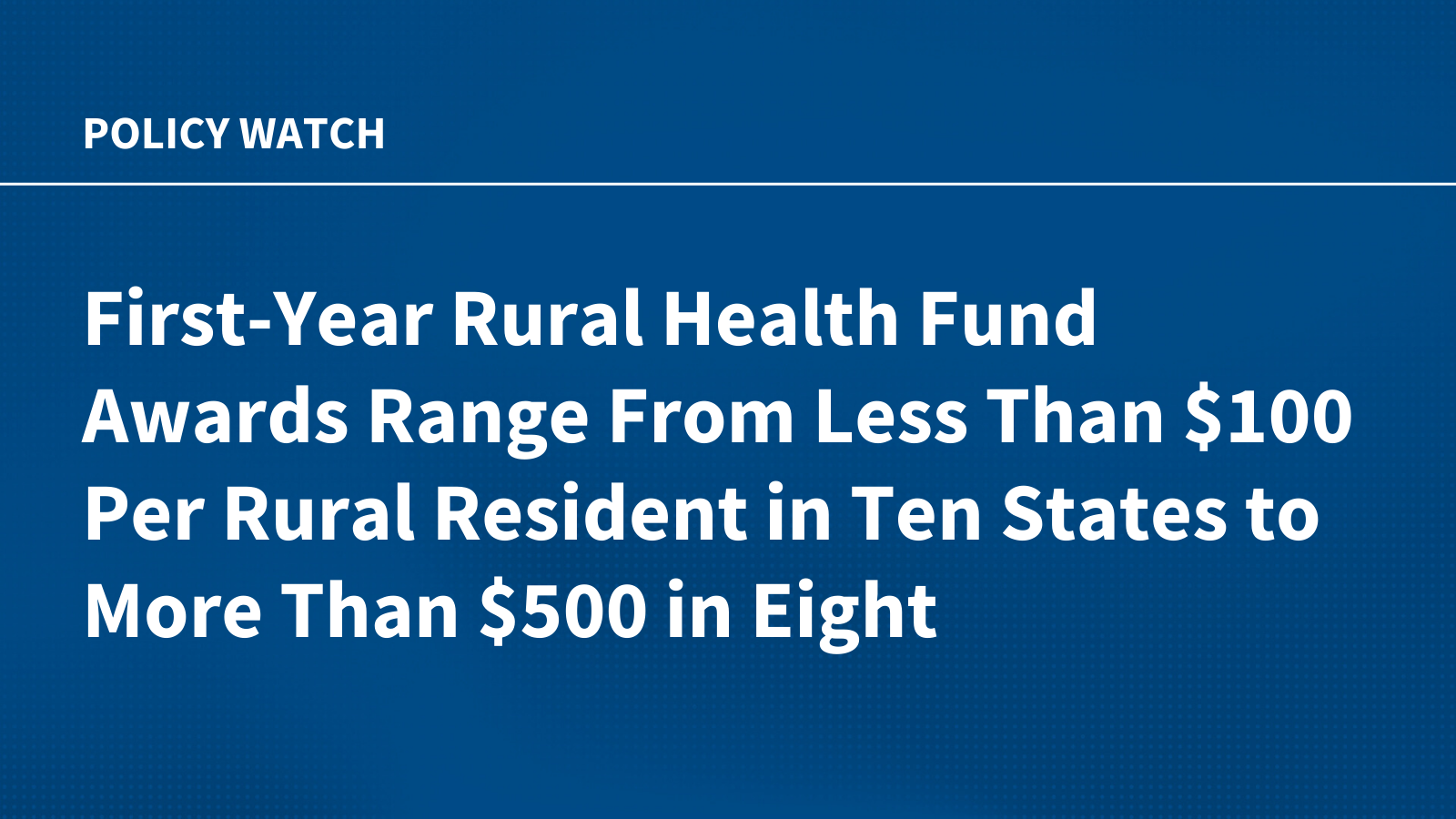Hospitals, health systems and physician practices are shifting their operational and financial strategies in the face of rapidly changing federal regulations.
Most healthcare delivery organizations (86%) have contingencies in place—some are scaling back services and restructuring their workforce, while others are expanding high-reimbursement lines, according to a KLAS Research survey. As organizations prepare for the financial impact of regulatory changes, it’s likely many health systems will cut back on low-margin care, KLAS researchers noted.
Most of the survey respondents are C-level or VP-level leaders or directors at their organizations.
Over the July 4 holiday, President Donald Trump signed a massive tax and spending bill that implements much of his domestic agenda. The Republican package will slash taxes, boost spending on the military and immigration enforcement and impose steep cuts to Medicaid, SNAP and clean energy funding.
Leaders at healthcare delivery organizations view Medicare and Medicaid cuts as the dark cloud on the horizon, with 71% of executives citing reimbursement changes as the biggest negative impact of federal policy shifts, according to the KLAS Research report.
“The biggest impacts are going to be if Medicaid funding is cut and also the tariffs . . . We will have more people that can’t pay for their care. We have the federal cuts, and then we have the state, who has put in some state mandates about financial assistance. The state says we can’t pursue patients. So the federal government says they are going to cut insurance, and then there is no way to force patients to pay, and there is no funding to cover the expenses,” a vice president with a small health system said in the survey report.
“Our bad debt is going through the roof. There is no incentive for patients to have insurance. We can’t report them. They are taking high-deductible health plans or catastrophic plans, and they don’t have to; they can’t pay for their out-of-pocket expenses,” the executive said.
The passage of the One Big Beautiful Bill Act (OBBBA) will have profound long-term implications for U.S. not-for-profit (NFP) hospitals, according to a note from Fitch Ratings issued Friday. However, many of the act’s provisions affecting the sector will not be implemented until 2027 or beyond, giving hospitals time to prepare.
Fitch expects many not-for-profit hospitals to improve their financial performance in FY 2025 compared to FY 2024 as management teams prepare for pressure from OBBBA in the coming years. The bill’s significant cuts to federal healthcare spending, particularly Medicaid, represent the greatest future threat to NFP hospital operations and cash flows.
Hospitals with higher exposure to Medicaid patients or in states that have aggressively expanded Medicaid eligibility, provider taxes or directed payment programs will be most vulnerable to financial pressures, Fitch Ratings notes.
Tariffs, presidential executive orders and proposed regulatory changes related to healthcare policy also will pressure industry cash flows, Fitch Ratings said. Executive orders have called for cuts to the National Institutes of Health and other federal scientific research funding, changes to the 340B drug program, site neutrality, and additional acute care provider administrative requirements related to Medicaid eligibility. Higher tariffs present challenges for operating costs and capital spending.
When citing negative impacts from federal policy changes, 19% of healthcare delivery organization executives cited 340B reform, 15% cited reductions in grants and research funding, 13% cited tariffs and 7% mentioned site neutrality, according to the KLAS survey.
Healthcare organizations are considering several contingency plans to combat government and regulatory shifts with workforce restructuring being a top strategy, cited by 26% of survey respondents. Academic health systems are the most likely to be considering workforce restructures in their contingency plans, according to the KLAS survey report.
Workforce restructuring includes a wide range of approaches, from proactive layoffs to hiring and salary freezes. Patient-facing roles are the least likely to be affected.
Other continency plans on the table include capital and discretionary spending cuts (18%), strategic service and operational realignment (17%), value-based care and reimbursement strategies (17%), revenue growth and external funding (15%) and balance sheet/reserve leveraging (14%). Five percent of respondents cited technology investments and automation.
Academic or large health systems are being more proactive in their response, targeting spending cuts in administration, IT backlog and discretionary spending before considering patient-facing impacts, KLAS reports.
Policy changes and uncertainty are causing about 1 in 5 healthcare delivery organizations to evaluate service lines and operational alignment, KLAS found. These changes will impact patient experience and access to care.
“We have had to scale back services that are not reimbursable, like palliative care. It is very poorly reimbursed,” the CEO of a post-acute care organization said.
“We are evaluating a potential volume shift of hospital-at-home back to brick-and-mortars,” a director at a large health system said.
Some small physician practices reported that they have implemented stricter financial policies on patients, such as discharging patients that cannot keep their balance under a $300 threshold. Many practices anticipate they will stop seeing Medicaid patients if there are cuts to the program.
Health systems and physician practices aren’t freezing their budgets, but they are redrawing them and making more targeted investments, the KLAS survey found.
Three-fourths of healthcare delivery organizations (75%) don’t anticipate IT cuts. Many organizations are shifting spend to vendor partnerships and tools with fast, measurable return on investment. They’re also focused on areas that will increase efficiency and reduce organization risk.
Organizations report IT spend is increasing for AI and automation (39%), cybersecurity (31%), increasing hardware/software costs (27%) and EHR-focused projects, such as implementation, optimization and integration (12%). About a quarter of respondents cited other increases in IT spend not listed.
Health systems are investing more heavily in AI and the increasing costs of hardware and software caused by tariffs and inflation, while physician practices are more heavily focused on cybersecurity and EHR-focused projects, KLAS reported.
Amid staffing cuts and shake-ups, nearly 40% of healthcare delivery organizations are betting on AI and digital tools to ease administrative loads.
“We anticipate significantly more spending on AI, as well as increasing data infrastructure, cloud migration, and device strategy,” said a C-level executive at a large health system.
Hospitals and health systems also are reevaluating payer partnerships, Medicare Advantage growth and contract performance. The current environment is driving key shifts in value-based strategy, KLAS reports, as C-suite leaders evaluate long-term risks based on payer alignment and shift their payer mix, such as including more or less Medicare Advantage members.
Providers also are exploring upside-risk models or capitated arrangements that offer more revenue stability and looking for payers that allow more predictable payment structures, greater flexibility, or better incentives.
“We are really looking at our value-based care contracts and trying to spend time and energy maximizing how we are going to align with them to get the most dollars back from things that we do. The only lever we can really pull is to ensure that we maximize our opportunities where we have upside and downside risk,” the chief medical information officer at a large health system said in the report.
Even smaller provider organizations are scenario planning and modeling, trimming capital spend, or adjusting staffing. But these organizations don’t have the resources of large health systems, leaving them with “limited teams, sparse analytics, and no margin for error,” KLAS reports.
Few organizations see a silver lining with government changes, but some cite deregulation and cybersecurity rules as potential positive impacts from federal policies.
KLAS researchers outlined key considerations for providers, payers and vendors as federal policy changes play out.
For health systems, hospitals and medical practices, KLAS suggested organizations make intentional cuts to services or programs, consider shifts in payer strategy (“even small shifts can create big relief”) and look at collaborative partnerships.
Payers should keep in mind that reimbursement stability is a strategic conversation to have with providers and interest in value-based arrangements is rising.
For vendors, KLAS researchers noted that tech spend is narrowing, but not disappearing, sales cycles will be gated by strategic clarity and also suggested that vendors focus on cost mitigation when speaking with providers.
Publisher: Source link










